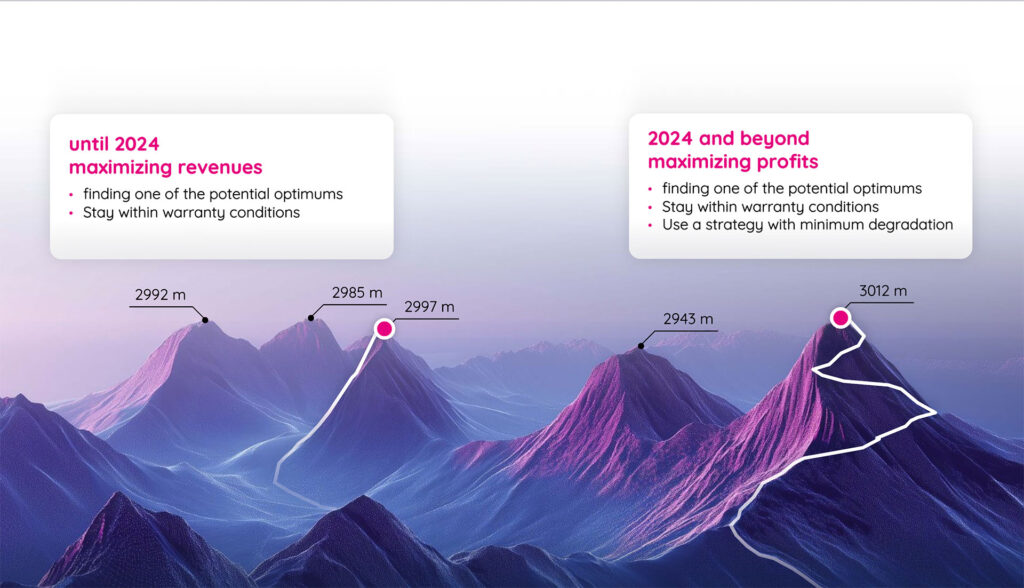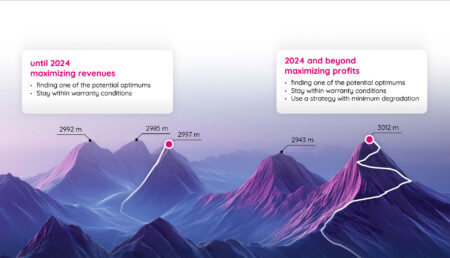
Optimized Battery Trading for Maximum Revenue & Minimal Degradation
A software tool helps battery operators balance manufacturer warranties with optimal economic efficiency.
Software provider volytica and battery optimizer enspired have joined forces to enable the optimal positioning of battery storage systems in the electricity trading market.

What hurdles do you currently see in monetizing large-scale battery storage systems?
Jürgen Pfalzer: Large-scale battery storage systems offer enormous monetization potential, but operators face several challenges. Each battery behaves differently, and manufacturers’ warranties are primarily designed to protect the asset. As a result, many storage systems and their revenue potential are underutilized. Our trading algorithms provide the flexibility to use the battery without violating the warranty, unlocking its full potential.
How exactly can your trading algorithms ensure better returns?
Claudius Jehle: With our battery monitoring software, the battery status is always visible. Operators and owners receive clear and reliable information about the performance parameters of the battery, such as the available energy and the degradation rate of the current usage profile, as well as safety statements. Accurate state of charge management, i.e. determining the actual energy content, is particularly important for lithium iron phosphate batteries: Due to their electrochemical characteristics, it is often difficult for local monitoring technology to determine exactly how much is left in the battery – a disaster for any retailer. This inaccuracy can be corrected by readjusting at a central point. Independent of this, our solution, especially in conjunction with enspired, enables the implementation of operating strategies that take into account wear and tear and therefore the cost per energy throughput.
Is it possible to improve the yield with more battery data?
Jürgen Pfalzer: More yield is possible if we operate the battery exactly within the warranty conditions instead of working with approximate values such as average cycles per day. We compare different driving modes using the degradation model: degradation is considered as a cost factor and the information from volytica enables us to find the optimal balance between maximum yield and minimum wear. This increases both the current yield and the future value of the battery.

What is meant by the ‘higher’ value of the asset?
Claudius Jehle: As wear and tear increases, the value and profitability of the battery decreases. The combination of our solutions optimizes the yield of the storage system over its entire service life, i.e. not only the turnover, but also the profit. This creates a balance between short-term revenue and long-term value retention for the first time.
In addition, the batteries of the stationary storage system are continuously monitored, which not only gives the operator additional security, but also convinces stakeholders such as insurance companies and investors.
Why are there operating conditions for warranties and what do they mean for the operation of battery storage systems?
Claudius Jehle: Manufacturers usually guarantee a residual capacity of 60-80% over a period of several years. This guarantee is often linked to strict operating conditions such as maximum charging cycles, charge/discharge rates, operating temperature and various other factors. Our goal is to make the most of these limits while controlling wear to ensure durability and ultimately profitability.
Without violating the warranty, how far can I “max out” my storage system?
Jürgen Pfalzer: The aim is to use the storage system as intensively as possible within the technical and warranty limits without unnecessarily stressing the battery. With more accurate data on the actual state of charge, operators can make optimal use of the available energy while staying within the operating limits, allowing the storage system to be operated to the maximum permissible conditions without taking unnecessary risks.
Why is degradation such a complex topic in commercial optimization?
Jürgen Pfalzer: It’s because we’re dealing with nonlinear problems that require real-time data and have to take many factors into account. 8,000 to 10,000 optimization runs are performed every day to evaluate different scenarios, and degradation is integrated into the optimization as a cost factor. Our in-house software solves this challenge because there are no ready-made solutions on the market. We have also filed a patent for our approach to ensure that our customers benefit from the technology in the long term.
How do battery diagnostics and trade optimization contribute to efficient use of large batteries?
Claudius Jehle: Batteries are often not used to their full potential because operators often rely on blanket manufacturer specifications. Continuous battery monitoring provides accurate data on anomalies, stress levels, health, state of charge, residual value, etc., and allows batteries to be used more efficiently and with less wear and tear.
Jürgen Pfalzer: Our trading algorithms aim to fully exploit short-term revenue potential. By integrating battery data, we can better manage the flexibility of storage systems without taking unnecessary risks. This allows operators to run their systems closer to their actual capacity limits. The result: more profit and more efficient use of existing capacity.
For more information and questions, enspired will be available at E-World in Essen, Germany. Hall 3, booth 30116, February 11-13, 2025.
 Our Product Manager, Max Vorhauer, will also be there to provide deeper battery insights.
Our Product Manager, Max Vorhauer, will also be there to provide deeper battery insights.
Please contact him directly for a one-on-one:


